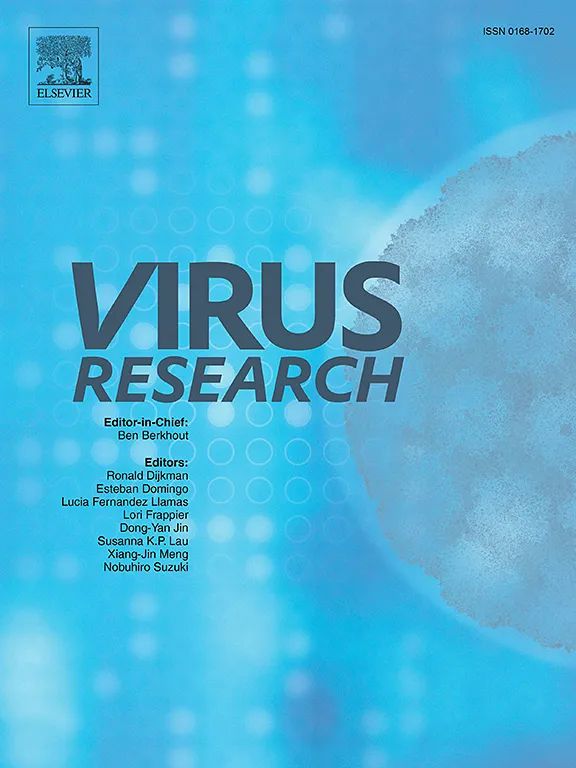Infectivity in full-term placenta of Zika viruses with different lipid profiles
IF 2.7
4区 医学
Q3 VIROLOGY
引用次数: 0
Abstract
Among flaviviruses, Zika virus (ZIKV) is the only arbovirus officially recognized as a teratogenic agent, as a consequence of its ability to infect and cross the placental barrier causing congenital malformation in the fetus. While many studies have focused on understanding ZIKV pathogenesis during pregnancy, the viral mechanisms affecting fetal development remain largely unclear. In this study, we investigated ZIKV virulence in placental trophoblasts, using viruses with distinct lipid profiles. Firstly, we propagated a ZIKV strain belonging to the Asian lineage in either mammalian or mosquito cells, obtaining two viral stocks, which were purified and analyzed to determine their genetic and lipid composition. Successively, we assessed the infectivity of the two stocks in placental cells using both immortalized cell lines and explants. We found that the two viral stocks displayed identical consensus sequences with homogeneous quasispecies composition. However, the lipid composition of their envelope significantly varied depending on the cell of origin, with the mammalian-derived viral stock characterized by a higher content of phosphatidylcholines compared to the virions originating from mosquito cells. Notably, ZIKV stock derived from mammalian cells showed a higher infectivity in immortalized villous trophoblasts and full-term placental explants of human origin. This increased infectivity was linked to enhanced fusion efficiency during the viral uncoating phase in trophoblast cells, as demonstrated using a lipophilic probe. Collectively, our data suggest a potential role of viral lipids as determinants of ZIKV infectivity in full-term placenta, underscoring the importance of lipidomic research in virology.
不同脂质谱的寨卡病毒在足月胎盘中的传染性。
在黄病毒中,寨卡病毒(ZIKV)是唯一被正式确认为致畸剂的虫媒病毒,因为它能够感染并穿过胎盘屏障,导致胎儿先天性畸形。虽然许多研究都集中在了解寨卡病毒在怀孕期间的发病机制,但影响胎儿发育的病毒机制在很大程度上仍不清楚。在这项研究中,我们研究了寨卡病毒在胎盘滋养层细胞中的毒力,使用具有不同脂质谱的病毒。首先,我们在哺乳动物或蚊子细胞中繁殖属于亚洲谱系的ZIKV菌株,获得两种病毒库存,并对其进行纯化和分析,以确定其遗传和脂质组成。随后,我们使用永生化细胞系和外植体评估了这两种砧木在胎盘细胞中的感染性。结果表明,这两种病毒种群具有相同的一致性序列和均匀的准种组成。然而,它们包膜的脂质组成因细胞来源的不同而有显著差异,与源自蚊子细胞的病毒粒子相比,源自哺乳动物的病毒库的磷脂酰胆碱含量更高。值得注意的是,来自哺乳动物细胞的ZIKV株系在永活绒毛滋养细胞和人类来源的足月胎盘外植体中表现出更高的传染性。这种增强的传染性与滋养层细胞中病毒剥膜阶段的融合效率增强有关,这是用亲脂探针证实的。总的来说,我们的数据表明,病毒脂质在足月胎盘中作为寨卡病毒传染性决定因素的潜在作用,强调了脂质组学研究在病毒学中的重要性。
本文章由计算机程序翻译,如有差异,请以英文原文为准。
求助全文
约1分钟内获得全文
求助全文
来源期刊

Virus research
医学-病毒学
CiteScore
9.50
自引率
2.00%
发文量
239
审稿时长
43 days
期刊介绍:
Virus Research provides a means of fast publication for original papers on fundamental research in virology. Contributions on new developments concerning virus structure, replication, pathogenesis and evolution are encouraged. These include reports describing virus morphology, the function and antigenic analysis of virus structural components, virus genome structure and expression, analysis on virus replication processes, virus evolution in connection with antiviral interventions, effects of viruses on their host cells, particularly on the immune system, and the pathogenesis of virus infections, including oncogene activation and transduction.
 求助内容:
求助内容: 应助结果提醒方式:
应助结果提醒方式:


